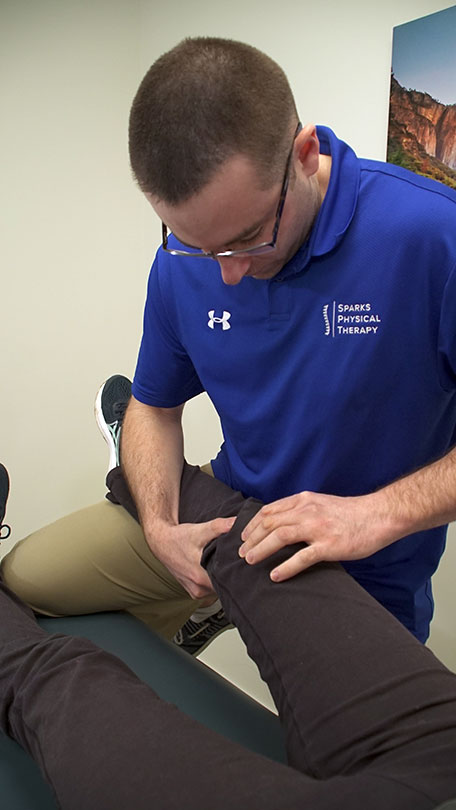ARTICLES
Vestibular Case Report
History: The patient reported experiencing increased dizziness following a recent sinus infection. Initially, she had a few days of congestion, after which the dizziness began. She described the dizziness as a sensation similar to being on a boat, with a feeling of unsteadiness and motion. The patient sought care from her primary care physician, who prescribed an antibiotic and ordered an MRI. The MRI results were largely unremarkable, showing only age-related changes and an effusion near the mastoid bone. The patient felt she was gradually improving; however, on the morning of her evaluation, while flipping her hair to blow dry it, she experienced a sudden room-spinning sensation.
Functional Limitations:
- Mild Handicap on Dizziness Handicap Index Scale
- Unable to blow dry her hair without dizziness
- Dizziness and unsteadiness throughout normal daily activities and increased with head movements
Objective Findings on Evaluation:
- Oculomotor exam normal except for saccadic pursuit with tracking left and right.
- CTSIB, only able to hold 4th position, standing feet together on foam, for 5 sec. Dizziness reported in both positions involving eyes closed.
- Negative Head thrust
- Positive Head shake test
- Infrared Lenses evaluation
- Resting L beat nystagmus that was non-fatiguing
- Brief upbeat in L Dix hallpike position, lasting 5-10 sec
- No nystagmus with Roll test left or right
Diagnosis: The patient presented with signs and symptoms consistent with left vestibular hypofunction following an upper respiratory infection, along with left posterior canal benign paroxysmal positional vertigo (BPPV).
Treatment: Initial treatment focused on the left Epley maneuver to address the left posterior canal BPPV. The patient was also given a home exercise program, which included walking with head turns and X1 viewing exercises aimed at improving vestibular hypofunction. The Epley maneuver was performed twice; however, the patient began to experience upbeat nystagmus and dizziness when moving from supine to sitting, but no nystagmus or dizziness in the Dix-Hallpike position. Due to this, treatment was adjusted to the Demi-Semont maneuver targeting the left posterior canal short arm BPPV, which successfully eliminated the patient’s positional vertigo. The patient continued progressing with vestibulo-ocular reflex (VOR) exercises and balance retraining. She was also encouraged to gradually return to all normal daily activities.
Results: After six treatment sessions, the patient demonstrated a normal oculomotor exam and normal positional testing using infrared goggles. Her Dizziness Handicap Inventory score improved significantly, decreasing from 28 to 8, indicating minimal to no disability. She was able to complete all conditions of the Clinical Test of Sensory Interaction and Balance (CTSIB) without imbalance or dizziness. The patient reported no dizziness during daily activities. She did, however, continue to experience ringing in her left ear triggered by rapid cervical flexion and extension, and has an ENT appointment scheduled to evaluate this symptom further.

Related Articles
Nutrition Needs for Concussions
ARTICLESNutrition Needs for Concussions - from our friends with FIT WITH FOOD What Is A Concussion? Ouch! Ever get hit too hard during a sports practice or game and hurt your head? Many contact sports, such as lacrosse, football, or soccer, have higher incidences of...
Post-Operative Shoulder Replacement – Case Report
ARTICLESPost-Operative Shoulder Replacement – Case Report History: The patient presented approximately two weeks following a right total shoulder replacement (TSR). He had previously undergone a left total shoulder replacement, with both surgeries involving anatomical...
Post-Operative Knee Replacement – Case Report
ARTICLESPost-Operative Knee Replacement – Case Report History: The patient presented to outpatient physical therapy three days following a left total knee arthroplasty (TKA). At the time of evaluation, the patient had a surgical dressing over the incision, which was...
